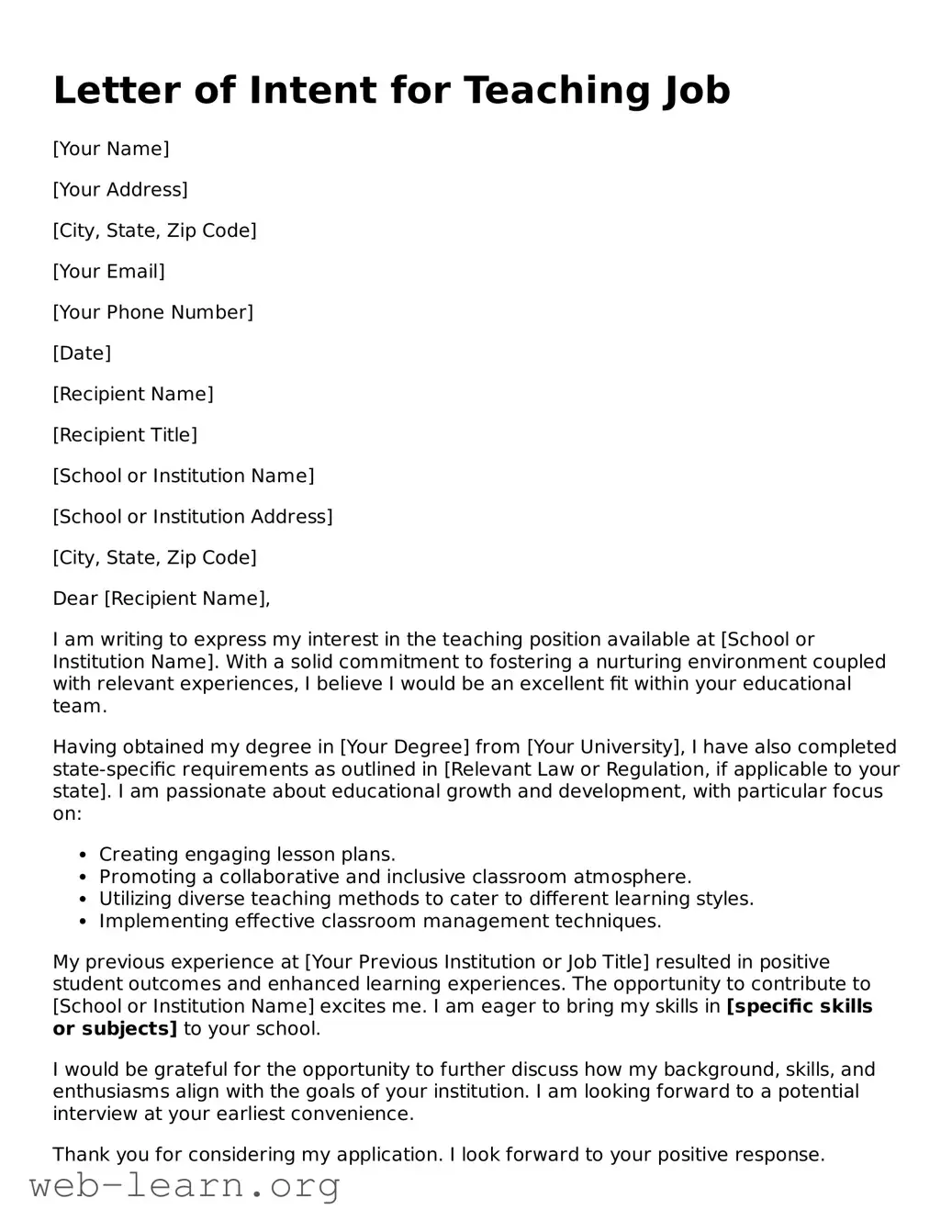Letter of Intent for Teaching Job
[Your Name]
[Your Address]
[City, State, Zip Code]
[Your Email]
[Your Phone Number]
[Date]
[Recipient Name]
[Recipient Title]
[School or Institution Name]
[School or Institution Address]
[City, State, Zip Code]
Dear [Recipient Name],
I am writing to express my interest in the teaching position available at [School or Institution Name]. With a solid commitment to fostering a nurturing environment coupled with relevant experiences, I believe I would be an excellent fit within your educational team.
Having obtained my degree in [Your Degree] from [Your University], I have also completed state-specific requirements as outlined in [Relevant Law or Regulation, if applicable to your state]. I am passionate about educational growth and development, with particular focus on:
- Creating engaging lesson plans.
- Promoting a collaborative and inclusive classroom atmosphere.
- Utilizing diverse teaching methods to cater to different learning styles.
- Implementing effective classroom management techniques.
My previous experience at [Your Previous Institution or Job Title] resulted in positive student outcomes and enhanced learning experiences. The opportunity to contribute to [School or Institution Name] excites me. I am eager to bring my skills in [specific skills or subjects] to your school.
I would be grateful for the opportunity to further discuss how my background, skills, and enthusiasms align with the goals of your institution. I am looking forward to a potential interview at your earliest convenience.
Thank you for considering my application. I look forward to your positive response.
Sincerely,
[Your Name]
